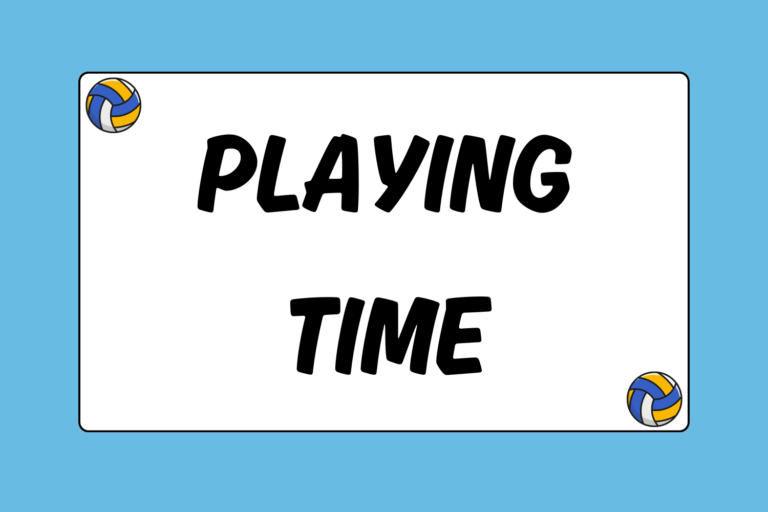You watched Misty May-Treanor and Kerri Walsh dominate their competition enroute to an Olympic gold medal and, like millions of others, you thought, “That looks like fun, I’m going to play volleyball.” The problem is you’re not sure where to start.
Taking up a new sport can be exhilarating: There are new challenges to conquer and many new things to learn. However, it can also be intimidating. After all, there are so many new things to learn. Don’t let a lack of familiarity keep you on the sideline. Here is a list of five things every new player needs to get started. Once you pick up the items below, you’ll be ready to do some dominating of your own.
1. Solid Pair of Shoes
Because volleyball is a dynamic sport that requires explosive movements, it is important to have pair shoes that will provide proper support. It would be a good idea to consider investing in a pair of volleyball shoes since they are tailored to the needs of the volleyball player. However, volleyball-specific shoes are not a necessity, as a sturdy pair of cross trainers or even basketball shoes could work fine.
If you are unsure about which shoes to choose, here is a checklist of things to consider when choosing a pair:
- Traction: The more traction a shoe provides the better off you will be on the court. The amount of traction will largely depend on the material of the sole. Gum-rubber soles are your best bet for maximum traction.
- Heel height: It is important to make sure the heel of any shoe being considered is not too high, because excessive heel height increases the risk of an ankle sprain or knee injury when moving side to side.
- Cushion: Constant jumping puts massive amounts of stress on your joints. However, a good cushioning system goes a long way to reduce joint stress.
- Construction material: You want to choose a shoe that is made of a solid material like leather or synthetic leather. It is a good idea to avoid shoes that are mostly mesh, because they will not provide adequate support for lateral movement.
2. Knee Pads
Nothing deflates the desire to hit the floor for every ball more than banging your knee against the hardwood. So save yourself the pain and frustration and get yourself some kneepads.
Kneepads come in a variety of different brands and sizes. Some have side padding and some offer more overall padding. Choosing kneepads is a matter of preference. As long as the pads provide protection you really can’t go wrong.
3. Ankle Braces
The ankle is the site for the most common injury in volleyball – the ankle sprain. Although the sprained-ankle club has a number of notable members, this is not a club you want to be initiated into. Ankle braces can help keep you healthy so you can spend your time on the court instead of on the sideline.
Fun Fact:
The University of Pennsylvania volleyball program began requiring its players to wear ankle braces during the 1998 season. In the following seven seasons (1998-2005) only one serious ankle injury occurred among Pennsylvania players.
4. Water Bottle
There are no two ways about it: Dehydration is a bummer and it will take its toll on the body. Make sure to bring a water bottle so you can stay hydrated, healthy and happy.
5. Volleyball Duffle Bag/Backpack
Now that you have a list of things that you should always have when you play volleyball, having a bag to keep your stuff in will make your life much easier.
The prices of sports bags can run anywhere from $10 to $200, thus with such a gaping disparity in price it’s important to know how to shop. When choosing a bag, the most important thing to consider is the size. You want a bag that will easily accommodate your equipment while also being easy to carry. A back pack or medium-size duffle bag are both great options. Another thing to think about when choosing a bag is the number of compartments and pockets. Compartments and pockets allow you to separate your equipment so that it is easy to get to (plus it’s always nice to be able to separate sweaty knee pads from your clean jersey).
Having a sports bag that is used exclusively for volleyball is the best way to make sure you’ll never find yourself one kneepad short when you get to the gym.
The Bonus List
Have extra room in your volleyball bag? Are you anxious to add to your collection of volleyball equipment? If the answer is yes, then here are five bonus items to add your bag:
- Athletic tape: Not only is athletic tape great for providing extra support for injury prevention, but it also comes in handy when your equipment is in need of some fixing
- Pre-wrap: If you don’t enjoy the feeling of tape directly on your skin, pre-wrap can provide a comfortable barrier. Plus, it now comes in an assortment of cool and stylish colors. You could be the envy of your squad when you show up with zebra-print pre-wrap.
- Rule book: While the official rule book may not be the most entertaining reading you’ll do, having a rule book handy in case there are any disagreements over rules is always a good idea.
- Whistle: Refereeing duties are part of the volleyball world. Make sure you are always ready to fulfill your duty by having a whistle with you at every tournament. It’s also a good idea to get a lanyard for your whistle.
- Flip flops/sandals: Slipping on a pair of flip flops will feel like a slice of heaven after a long day on the court.
In the End It’s All About You
Remember, your bag is just that: Your bag. That means the contents should cater to your individual athletic needs. After a couple of weeks of playing you will start to figure out exactly what items you need or may want to add to your collection. Either way, this list will get you started on the right track.





